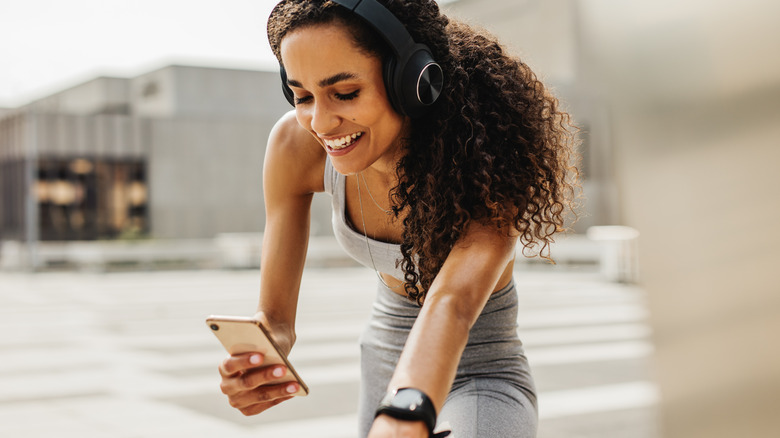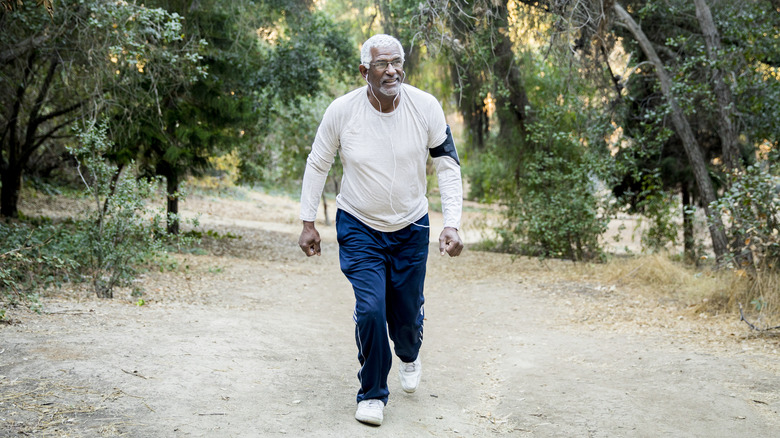TikTok Shares 3 Easy Ways To Naturally Lower Your Cortisol Levels (But Do They Work? Here's What We Know)
Lowering your cortisol levels may be easier than you think — at least according to TikTok. In a viral video with approximately 1.3 million views, nutritionist Micaela Riley details how water retention as well as bloating and weight gain were ongoing problems she faced over the years. Realizing that her cortisol levels "were through the freaking roof," as Riley puts it, she turned her attention to exercise. What she discovered were three methods for making her cortisol-lowering workouts both safe and effective. But does science support these claims?
Made by our adrenal glands, cortisol is a steroid hormone that aids in maintaining healthy blood pressure and blood sugar levels, regulating our sleep-wake cycle, lessening inflammation, and more, according to Cleveland Clinic experts. Most often, however, the hormone is associated with stress, as cortisol gets released when we're in a state of fight-or-flight. In the long run, chronic stress can leave us with an excess of cortisol, which can have detrimental health effects.
Lower the intensity of your workouts
The first thing that Riley says helped reduce her cortisol levels was letting up on the intensity of her exercise. Rather than working out at a high intensity nearly every day of the week as she had previously been doing, the nutritionist swapped her high-intensity interval training (HIIT) classes for regular walks. The science seems to support this, as a 2019 study published in Frontiers in Public Health found that male participants who went on 15-minute walks in the woods had lower amounts of cortisol in their saliva samples than those who spent 15 minutes walking in the city. So, even better if you're someone who loves getting out in the fresh air for a hike!
Riley said she also changed up her exercise regimen by switching to low-impact strength training. These workouts go easy on the joints and include swimming, biking, pilates, or the use of resistance bands or hand weights. Pilates instructor Sabrina Seymore told Yahoo! News that low-impact exercise can help regulate cortisol levels, particularly in women, but that consistency is key.
Get plenty of rest
The third way Riley said she was able to naturally lower her cortisol levels may sound a little counterintuitive, but rather than exercise at all, she decided to rest. For those just starting out on their cortisol-lowering journey, Riley actually suggests rest and recovery as the first step, advising individuals to forgo the gym for a couple of weeks before slowly acclimating themselves to walking and low-impact strength training a few days of the week.
Experts at Western Racquet & Fitness Club seem to feel similarly, saying that recovery can help bring cortisol levels back to baseline after vigorous exercise. Sleep is another form of rest that research shows to be an important piece of the puzzle. Research published in 2015 in the scientific journal Sleep Science highlights how sleep deprivation and elevated cortisol levels go hand in hand. Knowing this, taking time to rest and ensuring we're getting sufficient amounts of sleep may help decrease cortisol levels. When combining all three natural methods together, Riley says you may notice more significant improvements after hitting the gym.


